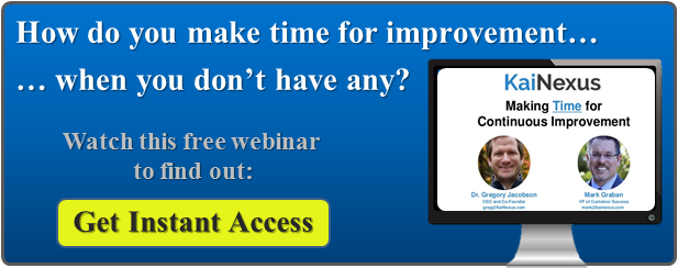 Hoshin Kanri, or "strategy deployment," is a formal Lean method that is used to get everybody pointed in the right direction. Hoshin means "compass needle" or "direction," and Kanri means "management" or "control." Hoshin Kanri is often referred to as "strategy deployment" or "policy deployment." The main objective is to keep everyone moving on the path toward strategic goals without neglecting the tactical daily management of the business.
Hoshin Kanri, or "strategy deployment," is a formal Lean method that is used to get everybody pointed in the right direction. Hoshin means "compass needle" or "direction," and Kanri means "management" or "control." Hoshin Kanri is often referred to as "strategy deployment" or "policy deployment." The main objective is to keep everyone moving on the path toward strategic goals without neglecting the tactical daily management of the business.
Hoshin Kanri software is designed to support this effort and, when used properly, can help organizations achieve their long-term goals while introducing immediate incremental improvements. Unfortunately, we’ve seen some organizations make damaging mistakes when implementing or using Hoshin Kanri software. Here are a few that you can avoid.
Blunder #1 – Limiting Use to Executives or Management
Because Hoshin Kanri involves strategic management, some leaders wrongly assume that means that only leadership needs to be exposed to the solution. Nothing could be further from the truth. The whole point is organizational alignment, so it is essential that everyone have access to information that can guide their decisions as well as give them a way to communicate what they are seeing on the front lines to upper management.
Blunder #2 – Treating Hoshin Planning Like an Event
Putting together an annual plan and then sticking it in a drawer to gather dust is a time-honored corporate tradition. Don’t do that. The point of Hoshin Kanri software is to bring your long-term goals and short-term opportunities for improvement to life, making them part of the fabric of how business gets done on a daily basis.
Blunder #3 – Choosing a Solution that Doesn’t Fit with How People Actually Work
Hoshin Kanri software does you no good if people can’t - or won’t - use it regularly. That’s why it is important to select software that is compatible with today’s mobile, distributed workforces. You want your team to be able to access information and document issues, when and where they see them.
Blunder #4 – Neglecting Training
Organizations risk their Hoshin Kanri software implementation by making two common training mistakes. The first is not to train at all, which is obviously foolish, the second is limiting training to how the software works. That’s important, of course, but the team also needs training on the concept itself. They need to understand how and why it will benefit the organization and what role they have to play in its success. It is also important to remember that training isn’t a one-time thing. There should be a plan to build on the team’s knowledge over time and bring new employees up to speed.
Blunder #5 – Infrequent Measurement
Your Hoshin planning process should produce measurable results and your software should make it easy to assess and report on the impact of incremental improvements and your progress toward more strategic goals. It is both important to choose a solution that supports this and to use it regularly.
These errors are easily avoided with careful thought and planning. Don’t let these missteps slow your path to your organization’s most important goals. When executed well, Hoshin Kanri technology takes the friction out of making daily improvements while achieving strategic success.



Add a Comment